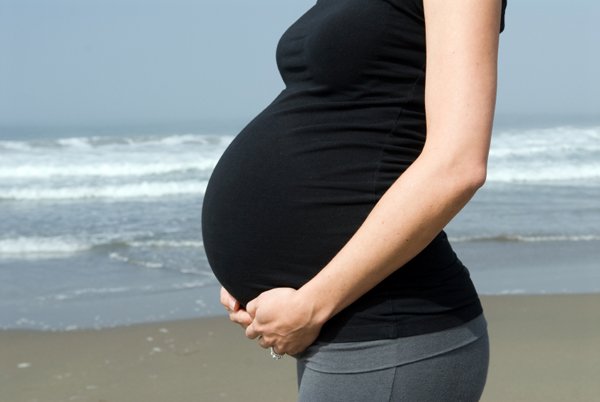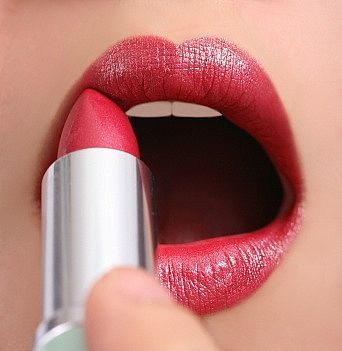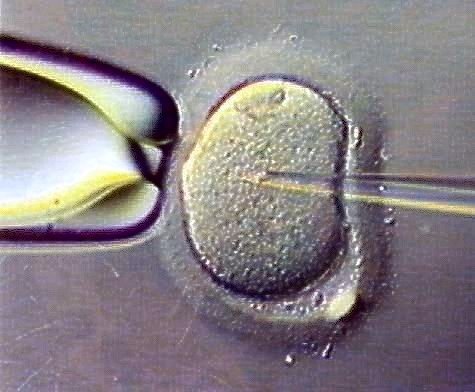Professor Jean Twenge from San Diego State University has dismissed the theory that once women pass 30 they will immediately begin to suffer fertility problems.
Psychologist Jean Twenge has controversially claimed that there’s not really a difference between trying to get pregnant in your late 20’s and your late 30’s.
She has refuted statistics that claim there is a significant difference in the odds of getting pregnant in your late twenties.
Prof. Jean Twenge claims that many women are reading statistics based on outdated records, taken from a time before antibiotics, electricity and advanced medical treatment were in use and the quality of life was much lower.
Writing in The Atlantic, the author – who has written the book The Impatient Women’s Guide to Getting Pregnant – says that she too feared she would be left childless as she had not tried for a baby and had passed 30.
She said: “Most books and websites I read said that one in three women ages 35 to 39 would not get pregnant within a year of starting to try.
“The first page of the American Society for Reproductive Medicine’s [ASRM] 2003 guide for patients noted that women in their late 30s had a 30 per cent chance of remaining childless altogether.
“The guide also included statistics that I’d seen repeated in many other places: a woman’s chance of pregnancy was 20 percent each month at age 30, dwindling to five per cent by age 40.
“Every time I read these statistics, my stomach dropped like a stone, heavy and foreboding.”
She counsels that there is a just a marginal difference between falling pregnant at 27 and 39 – despite what the majority of websites and books say.
Instead, Dr. Jean Twenge says that some statistics widely touted today are actually based on data from French birth records from 1670 to 1830.

Psychologist Jean Twenge has controversially claimed that there’s not really a difference between trying to get pregnant in your late 20’s and your late 30’s
She also rubbishes the widely cited statistic that one in three women ages 35 to 39 will not be pregnant after a year of trying, which is based on a 2004 article in the Human Reproduction journal, which used the historical record as its source.
She says that women are now basing their pregnancy plans on these antiquated reports, and should focus on modern studies, that show a more encouraging outlook when it comes to getting pregnant.
Prof. Jean Twenge said a 2004 study in Obstetrics & Gynecology studied the chances of pregnancy among 770 European women, and found positive results.
The study, led by David Dunson, discovered that of the subjects who had intimate relations at least twice a week, 82% of 35-to-39-year-old women conceived within a year, compared with 86% of 27-to-34-year-olds.
This showed that the fertility rates of women in their late 20s and early 30s was almost identical – which will bring considerable relief to worried women who fear that their chasing other priorities has wiped their chances of motherhood.
The author seeks to calm the panic many women feel, using herself as an example – she had three children and all after the age of 35.
She says fertility problems are not solely based on a woman’s age, and points to endometriosis and blocked fallopian tubes for causing difficulties in conceiving.
But her comments have been met with criticism from other experts, who insist that age does significantly affect fertility.
Lord Winston, The Times reports, claims that medical data collated over 20 years shows a definite decline in fertility with age and, while warning doctors from urging women to have children at a young age, says that there is good evidence of a decline with age.
The newspaper also reported that consultant obstetrician and gynaecologist Valentine Akende said that generally, women’s fertility rates began to slip at 31, dropped at age 37 and sharply fell after age 41.
But despite Prof. Jean Twenge’s reassurances, it would seem that the statistics have had a lasting impact on women’s views of motherhood.
A new research reveals your long-lasting bright lipstick could contain a host of chemicals that may seriously harm your health.
Concerns are growing about links to muscle problems, hormone disruption and poisoning by heavy metals, as well as raised risks of allergies and even a form of arthritis.
Among the substances sparking alarm are chemicals such as parabens, methacrylate, lead and cadmium.
The latest to hit the headlines is a substance called triclosan, which is used as a preservative in popular lipsticks. Research out last week linked triclosan to muscle and heart problems. The chemical has also sparked fears that it causes bacteria to become resistant to antibiotics and turn into superbugs.
Johnson & Johnson, the producer of Listerine mouthwash and Neutrogena soap, has pledged to remove triclosan – along with a host of other worrying chemicals – from all of its skincare products.
The latest research on triclosan suggests that it may hinder the process by which muscles – including the heart – receive signals from the brain.
Molecular bioscientist Professor Isaac Pessah found a “dramatic” 25% reduction in heart function within 20 minutes of laboratory mice being exposed to triclosan. He warned that there is “strong evidence” that it could affect human health. His study also found that triclosan can seriously reduce muscle power.
Previous studies have found that triclosan may have links to thyroid and fertility problems. It may increase women’s levels of male hormones – androgens – causing symptoms such as acne, weight gain, excessive hair growth, menstrual dysfunction, and infertility.
The chemical is under investigation by the U.S. Environmental Protection Agency over fears that it damages people’s health. The European Commission says it is legal for humans, but its use remains “under evaluation”.

A new research reveals your long-lasting bright lipstick could contain a host of chemicals that may seriously harm your health
The Cosmetic, Toiletry and Perfumery Association (CTPA) in UK has dismissed the latest research as irrelevant because it only involved tests on mice rather than humans. The association adds that the amounts of triclosan used in the experiments exceeded the maximum permitted levels in cosmetics.
It stresses that all cosmetic products sold in the UK are controlled by European safety legislation, adding: “There are many false allegations levelled against cosmetics manufacturers, accusing them of selling unsafe products and using harmful ingredients. These allegations are just that, false.”
However, mounting concerns over the effects of such “safety-approved” chemicals last week moved the skincare giant Johnson & Johnson to announce that it will go far beyond the current requirements of European and American regulators.
It has pledged to remove a host of potentially harmful chemicals from its products, including triclosan and parabens – a type of preservative commonly found in lipstick.
There are concerns that parabens may act like the female hormone oestrogen and interfere with women’s menstrual cycles. Research by Dr. Philippa Darbre, an oncologist at the University of Reading, has even linked parabens to an increased risk of breast cancer.
Investigators have also found other worrying chemicals in some lipsticks. A report in the Journal of Hazardous Materials in 2010, for example, examined the ingredients of a broad range of lipsticks, and discovered that they often contain significant amounts of heavy metals – namely cadmium and chromium.
These are linked to problems such as dermatitis (skin inflammation) and possible kidney damage in the long term.
“Their extraction from the human body takes over 40 years,” the study warned.
Similar studies have found lipsticks containing methacrylate, a form of adhesive, which can irritate the skin.
Some research even links lipstick use with the development of a chronic and severe arthritis- a type of auto immune disease called systemic lupus erythematosus (SLE). The condition makes sufferers produce antibodies that attack healthy tissue, and this leads to inflammation and damage. Lupus can affect the skin, joints and internal organs, including the kidneys.
In 2008, investigators at Tufts Medical Centre in Boston examined the results of previous research studies into this, and concluded that “using lipstick at least three days a week is significantly associated with an increased risk of SLE”.
Women who started wearing lipstick before the age of 16 have significantly higher risk levels, as do women who wear it seven days a week. The researchers suggested that the lupus may be set off by chemicals and heavy metals in lipstick being absorbed by the sensitive tissues that line the cheeks and the back of the lips, called the buccal mucosa.
Perhaps the best-known worry about lipsticks concerns lead poisoning which builds up over time in the body and can cause brain and nerve damage.
Manufacturers don’t actually add lead to lipstick: it’s naturally present in the minerals they use for bright pigments.
Lead levels in lipsticks have been studied by the American safety watchdog, the Food and Drug Administration (FDA).
In its most recent test last year, the FDA found that most of the 400 lipsticks studied contained lead and, worryingly, that the maximum level detected had more than doubled between 2009 and 2011.
Nine of the lipstick brands with the most lead are sold by L’Oreal, the world’s largest cosmetics maker. L’Oreal’s “Color Sensational” Pink Petal had the most lead of any lipstick tested, at 7.19 parts per million. The average lead concentration in the 400 lipsticks tested was 1.11 parts per million.
In response, L’Oreal said: “The lead levels detected by the FDA in the study are also within the limits ¬recommended by global public health authorities for -cosmetics, including lipstick.”
Campaigners fear that toxic substances in lipstick are easily absorbed into the bloodstream through the lips and mouth, and that women repeat their lipstick applications multiple times a day.
It has been estimated that the average woman could swallow between 500 g and 1,500 g of lipstick in her lifetime if she were a modest but regular user.
Lead consumption may be particularly dangerous at certain points in a woman’s life. As the official journal of The International Society of Regulatory Toxicology & Pharmacology points out, “pregnant and nursing mothers are particularly vulnerable to lead in lipsticks, because the metal passes through placenta and human milk and can affect the foetus or infant’s development”.
All these worries prompt Pat Thomas, a UK expert and author on cosmetic safety, to urge women to moderate both their use of lipstick and the brightness of the colors they choose.
“The lists of permitted ingredients lag seriously behind research on safety,” Pat Thomas warns.
“This includes substances such as parabens and triclosan.”
She adds: “As for lead levels, it depends on the lipstick. More and more manufacturers are using mineral products for the pigments in their lipstick. These minerals are mined from the ground, and any mined product will contain lead, as well as other potential dangers such as arsenic and cadmium.”
Ironically, lead levels in some lipsticks have increased because of consumer demand for more “natural” cosmetics. Make-up made with natural ingredients might sound healthier for your skin – and often they are – but with intense modern lipstick shades, the opposite can be true, thanks to the high lead levels in some mined pigments.
“The proportions vary according to the color. All of them will have some level of lead. As a rule of thumb, you can almost guarantee that if it’s a really intense color that lasts for a long time, it will contain the highest levels of lead.”
Pat Thomas acknowledges that the levels of lead in even the brightest hues are comparatively low. But against that, she adds, we have to balance the unknown danger of smearing such substances around our mouths so regularly.
“If it is a concern for you, then go for glosses and sheer colors,” says Pat Thomas.
A new Australian study has found that fertility treatment used to help infertile men become fathers can raise the risk of birth defects in babies.
Research on more than 300,000 babies found those born using Intracytoplasmic sperm injection (ICSI) had a significantly higher risk of developing abnormalities than those conceived naturally.
Researchers linked a census of more than 6,100 births that occurred as a result of fertility treatment in South Australia to a registry of more than 300,000 births and 18,000 birth defects.
The report by the University of Adelaide published in the New England Journal of Medicine shows that on average defects were present in 8.3% of pregnancies that involved fertility treatment compared to 5.8% of those conceived naturally.
According to the study, in vitro fertilisation (IVF) posed the least risk to women opting for assisted conception, with defects occurring in only 7.2% of pregnancies.
ICSI is primarily used for male fertility problems and this risk is decreased using frozen eggs, according to the study’s lead author, Associate Professor Michael Davies.
“I don’t want to scare people,” he said because the majority of babies were born healthy.
“But this may be due to developmentally compromised embryos failing to survive the freeze/thaw process,” he said.
“While assisted reproductive technologies are associated with an increased risk of major birth defects overall, we found significant differences in risk between available treatments.”

Research on more than 300,000 babies found those born using Intracytoplasmic sperm injection (ICSI) had a significantly higher risk of developing abnormalities than those conceived naturally
More than 3.7 million babies are born each year through assisted reproduction.
Methods include everything from drugs to coax the ovaries to make eggs to artificial insemination and IVF. Fertility treatments account for about 4% of births in Australia and as many as 8% of them in Denmark, where costs are widely covered, Michael Davies said.
In the United States, more than 60,000 babies were born in 2009 from 146,000 IVF attempts. About three-quarters of them used ICSI, or intracytoplasmic sperm injection.
ICSI was developed because of male infertility. But half the time, it was not done for that reason but to improve the odds that at least some embryos will be created from an IVF attempt.
In 2005, the last year for which data was available, 5,935 babies were born as a result of IVF treatment compared to 5,265 babies born with the help of ICSI.
One surprising find within the research was a tripling of risk among women who used the drug clomiphene citrate to stimulate ovary production, though this was among a small group within the study.
The drug is cheap and easily available through the internet, raising the possibility of abuse, but it is known to cause foetal abnormalities if the woman taking is not aware she is already pregnant.
The drug is prescribed after a mandatory pregnancy test in a clinical setting, but this can be avoided in self-medication.
Associate Professor Michael Davies said: “While confined to a small group in our study, this is of particular concern as clomiphene citrate is now very widely available at low cost, and may easily be used contrary to manufacturers’ very specific instructions to avoid use if pregnant, as it may cause fetal malformations.
“This aspect of the study will need additional confirmation from future research.
“A history of infertility, either with or without assisted conception, was also significantly associated with birth defects.
“While factors associated with the causes of infertility explained the excess risk associated with IVF, the increased risk for a number of other treatments could not readily be explained by patient factors.
“ICSI, for instance, had a 57% increase in the odds of major defect, although the absolute size of the risk remained relatively small.”



